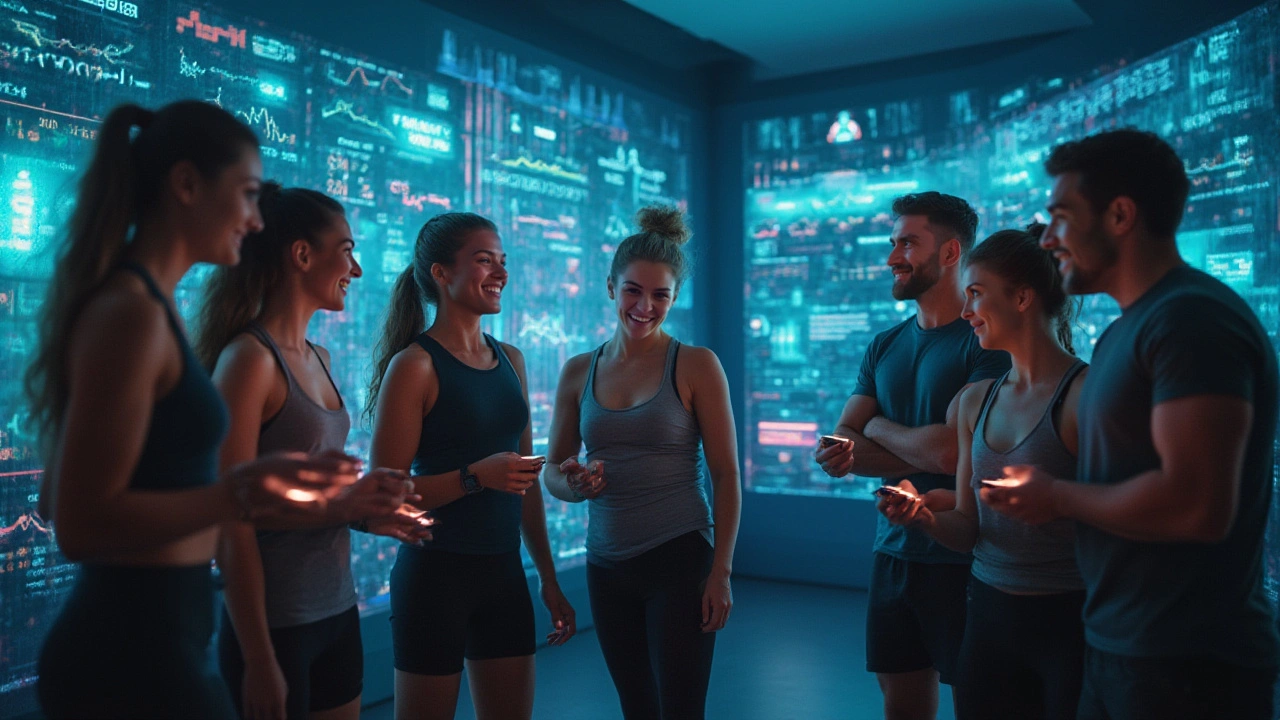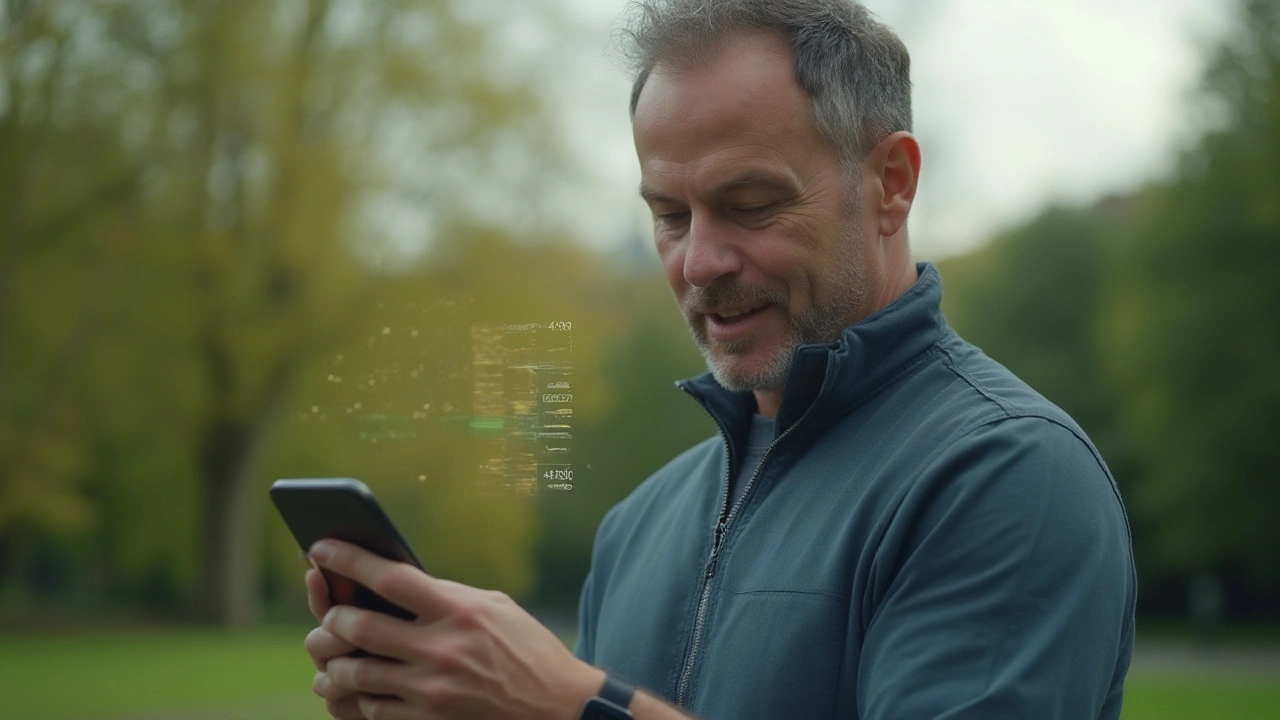Ever wondered how Olympic athletes stay cool under pressure or why top CEOs can deliver flawless speeches while their heart rates barely budge? It’s not superhero DNA. It’s something much more accessible and surprisingly practical—biofeedback. Imagine holding real-time data about your body in your hands, literally watching your stress, focus, or heart rate change as you breathe, move, or even think. This is peak performance, powered by science, not luck.
How Biofeedback Works: The Science Behind Self-Mastery
Biofeedback is a bridge between high-tech gadgets and primal self-awareness. At its core, biofeedback uses sensors to track things like breathing, muscle tension, skin temperature, or brainwaves. You get instant feedback—often through an app or screen—which lets you see tiny shifts in those body signals. The magic? You start to notice how stress, or excitement, or even a simple thought, can ripple through your system. Over time, you learn to tweak your breathing, relax muscles, or shift your focus to send your body in the direction you want to go.
This isn’t just theory. Biofeedback has strong roots in clinical science. For example, the American Psychological Association found that regular biofeedback training helped people reduce tension headaches, improve heart rate variability, and even manage chronic pain. Physical therapists have used EMG (electromyogram) biofeedback since the 1970s to help stroke survivors re-learn muscle control, and mindfulness programs often include heart rate variability (HRV) feedback to deepen relaxation skills. That’s proof in the pudding.
What’s nuts is that these same clinical tools are making their way into high-performance training. Pro athletes monitor HRV with wearables to avoid burnout or fine-tune training, and eSports pros hack their stress levels to keep their cool in million-dollar tournaments. NBA teams have even experimented with neurofeedback headsets—capping players with sleek EEG devices that measure brainwaves and help them zone into “the zone.”
The real power of biofeedback is that it turns the invisible—your heartbeat, your brainwaves, your breath—into data you can work with. For instance, when you learn to shift your breathing into slow, controlled rhythms, your heart rate follows. That kind of self-regulation ramps up resilience, focus, and even recovery.
| Biofeedback Type | What it Measures | Real-World Applications |
|---|---|---|
| EMG (Electromyogram) | Muscle tension | Rehab, sports training, stress relief |
| EEG (Electroencephalogram) | Brainwaves | Focus, anxiety, ADHD optimization |
| HRV (Heart Rate Variability) | Autonomic nervous system | Stress management, athletic recovery, meditation |
| Thermal | Skin temperature | Migraines, stress detection |
| GSR (Galvanic Skin Response) | Sweat gland activity | Lie detection, stress monitoring, emotional feedback |
Devices have come a long way too. You’ve got everything from clinical-grade wearables to pocket-sized gadgets. Fitbit, Whoop, and Apple Watch mostly track HR and HRV, while Muse headbands are aimed squarely at meditation and focus training. Companies like HeartMath make affordable HRV devices that sync with your phone. Even video games are jumping in, with games that adapt their difficulty based on how stressed or chill you are—think Tetris, but for emotional control.

Real-World Peak Performance: Stories, Stats, and Surprises
If you want results, the numbers don’t disappoint. One widely cited Cleveland Clinic study showed that over 80% of users lowered their blood pressure through biofeedback training. American soldiers have used handheld HRV devices to sharpen focus before missions. Even in classrooms, HRV feedback helps anxious students settle their nerves before big exams.
Let’s zoom into sports. In pro baseball, some pitchers train with biofeedback gloves that buzz if their grip gets too tense. With regular use, they cut down on “choking” during high-stress innings. In golf, pros use biofeedback to steady their hands and keep their breathing on point—shaving strokes off their rounds. In cycling, Tour de France riders analyze HRV to dial in just enough training to improve, but not so much they overtrain and burn out. All this translates into real, measurable improvement—reduced errors, faster recovery, and more clutch performances when it matters.
You don’t have to be elite to cash in on these benefits. Corporate executives in Seattle use neurofeedback apps to prep for big presentations—they literally train their brain to focus and relax at will. Musicians use HRV training to find their rhythm and avoid stage fright. Even surgeons—whose margin for error is razor-thin—train with biofeedback before long, high-stakes operations.
Here’s something wild: A Stanford study found that short HRV training sessions can reduce test anxiety by as much as 19%. That’s not just feeling better—it’s boosting actual performance. Another cool fact? Some professional video gamers plug into GSR sensors to train emotional regulation. Simply by tracking sweaty palms before a tournament, they learn when they’re spiraling—and how to reroute their focus.
Want a quick tip? Start with your breath. Most biofeedback devices out there today encourage conscious, slow breathing. Try this: inhale for 5 seconds, exhale for 5, and keep it up for just five minutes. Watch your heart rate settle and your head clear. This isn’t just mumbo-jumbo; it’s grounded in how your body synchronizes with your breath when you pay attention. Even if you don’t own a gadget (yet), you’re tapping into the core of biofeedback just by following your data, whether it’s a digital number or your own awareness.
Schools are also dipping their toes into this world, especially since stress and anxiety among teens have spiked. A district in Oregon piloted an HRV biofeedback program and saw attendance and grades inch upwards—kids got better at self-soothing, which meant fewer meltdowns and more engagement in class.
Biofeedback isn’t all smooth sailing. It takes practice, and there’s a learning curve. But feedback is immediate, which keeps you engaged. Instead of hoping a habit works, you see it live. When you track progress, every small win keeps you coming back. This is exactly why competitive folks love it—it gamifies progress. Set a new HRV high score? That’s real motivation.

Biofeedback Tips, Tools, and Starter Strategies for Everyday Life
So where do you start if you want to live at peak performance? The answer is easier than you think. Most folks assume it takes an expensive device or hours with a coach. The reality is you can jump in with minimal gear and still reap huge benefits. Here’s a step-by-step breakdown for anyone curious:
- Pick the right metric. Are you gunning for focus? HRV or EEG feedback is for you. Tackling tension? Try an EMG muscle trainer. Just chillin? Simple breath and pulse devices work wonders.
- Start small. Five minutes of focused breathing per day, with or without a device, is plenty. Most high-level performers start with small tweaks, not marathon sessions.
- Use your phone. Tons of free or inexpensive apps (like Elite HRV, Breathwrk, or Headspace) sync with basic sensors, or even just use your phone’s camera to track your pulse. It’s not clinical, but it’s real.
- Track results—without judgment. Your first week may feel weird. That’s normal. Note any patterns, like calmer mornings or less jitter before presentations. The numbers are less important than the trends.
- Gamify it. Set a weekly HRV streak or challenge a buddy to a breathing contest. Seeing progress makes it stick.
- Pair with movement. Yoga, cycling, or even a brisk walk gets your HRV trending higher. Measure before and after, and watch your resilience tick upward.
- Level up with wearables. Once you’re hooked, try Oura Ring for sleep and readiness scores, or Muse’s EEG headband for targeted focus games. The tech is getting friendlier and less bulky every year.
Don’t forget: Every body’s different. What works for your favorite YouTube athlete might need tweaking to work for you. That’s the whole point—biofeedback is about tuning into *your* status, not some generic average. Track, tweak, and adapt—then watch as your stress lowers, your mood picks up, and your performance sharpens without caffeine or willpower alone.
The future is bright—and full of data. Biofeedback isn’t about becoming a robot, it’s about unlocking human potential. The most advanced tool you’ll ever use still lives under your skin. The gadget just holds up a mirror.

